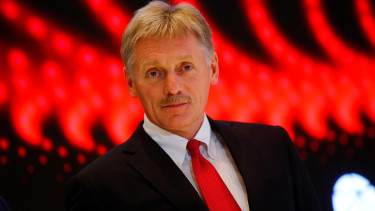European Commission projects sharp deceleration in Hungary after major growth

Note that the Autumn 2019 Economic Forecast has taken into consideration only those economic policy and fiscal measures that have already been adopted. As a result, the recently announced second and third economic action plans and their impacts have not yet been incorporated in the estimates.
These aim to keep Hungary's annual GDP growth around 4.0%, and the measures would definitely be necessary if we give credit to the EC's prognoses, as the Commission expects Hungary's growth to drop sharply to 2.8% next year from 4.6% in 2019, and it sees no upturn even in 2021.
The International Monetary Fund (IMF) has also recently published its updated forecasts for Hungary (see link below). The Fund has also revised its 2019 GDP estimate for Hungary sharply to 4.6% from 3.6% previously, and the 2020 estimate was also upped to 3.3% from 2.7%. The EC, however, did not follow suit in respect of the latter.
The chart below serves as an explanation why the EU executive projects such a marked deceleration in growth in 2020. It estimates that the major contribution of investments (gross fixed capital formation or GFCF) to growth will decline considerably, while the contribution of household consumption is also expected to subside.
The generally accepted view on the Hungarian economy that the investment boom will lose a lot of momentum in the following years, and the debate is only about the degree of the decline and the extent of its impact on GDP growth. The EC's latest estimate leaves no doubt what the Commission thinks in this respect, but the aforementioned new action plans have not yet been taken into consideration.
The support to growth from construction and the automotive industry are set to fade towards the end of 2019, and GDP growth is projected to drop from 4.6% in 2019 to 2.8% in both 2020 and 2021. Short-term indicators already anticipate this slowdown. The growth of construction output had moderated from double digits to 5.9% by August, while order books have been contracting throughout the year. Manufacturing has also lost momentum in recent months.
Household consumption is projected to slow gradually. The labour market may become less tight as lower GDP growth limits labour demand and constrains further real income gains. Rising government support to families and for home buying contribute to higher household investment. At the same time, the attractive yields of retail government bonds will keep the saving rate high.
The investment rate is set to decrease from a record high level.
Public investment is projected to moderate in 2020 after Hungary’s absorption of EU funds peaked in 2019.
In contrast, private investment is forecast to rise further as real estate projects already in the pipeline are completed. Several big-ticket projects in manufacturing are expected to be finalised in the forecast years.
Exports are set to grow more slowly in 2020, in line with subdued growth in trading partners.
However, new manufacturing capacities may raise the market share of Hungarian exporters, especially in 2021.
The depreciation of the currency has so far limited the impact of strong wage growth on cost competitiveness. Import growth is forecast to slow because of weaker domestic demand. As a result, the current account deficit is set to decrease in the coming years. The continuing inflow of EU funds should keep the external financing position positive.
External risks to the forecast remain on the downside. Upside domestic risks stem from the continuing tightness of the labour market, which could sustain faster wage and consumption growth.

General government deficit set to shrink
The deficit is forecast to decrease to 1.8% of GDP in 2019. Tax revenues remain buoyant, on the back of favourable macroeconomic developments. The increase is, however, below nominal GDP growth, partly due to a 2 pps. cut in employers’ social security contributions. The absorption of EU funds is also expected to increase compared to 2018, reaching its peak over the current Multiannual Financial Framework.
The only factor contributing to the deficit’s reduction is the moderate increase of total current expenditure compared to GDP, taking also into account the full use of free reserves in the budget.
Interest expenditure is expected to remain stable as a share of GDP, due to the high premium offered by new retail bonds launched in June 2019.
The deficit-reducing contribution of current spending is only partly offset by an increase in capital expenditure resulting from the implementation of the programme to develop villages, the take-up of the pre-natal loan under the ‘demography programme’ and higher-than-foreseen national co-payments to EU funded projects.
In 2020, the deficit is forecast to decrease further to 1% of GDP.
Revenues from EU funds are assumed to decline by 0.5% of GDP. Tax revenues are expected to continue increasing but at a lower rate compared to 2019, following the measures included in the Economy Protection Action Plan, in particular the further cut of employers’ social security contributions by 2 pps.
Except for interest spending, current expenditure growth is expected to remain moderate, thus contributing to the deficit reduction. The drop in public investment (by 1% of GDP), following also a lower absorption of EU funds, is only partly compensated by higher capital transfers due to the increasing take-up of the ‘demography programme’.
These projections assume almost the full use of the substantially high level of free reserves (1% of GDP) foreseen in thebudget. In 2021, the deficit is estimated to decrease marginally, to 0.8% of GDP, under a no-policychange scenario. Budgetary risks stem from higher expenditure related to public investments and the measures in the ‘demography programme’, whose take-up was higher than expected in 2019.
A detailed table of estimates show that the EC expects the rate of unemployment to stagnate at 3.4%, annual average inflation to drop from 3.4% this year to 3.1% in 2020 and to the central bank's target of 3.0% in 2021.
Hungary's foreign trade balance is projected to show deficit on the entire forecast horizon and the current account balance to shrink but to remain close to 1.0% of GDP. Despite the sharp decline in GDP growth, the Commission expects the budget gap to drop from 1.8% of GDP this year to 1.0% in 2020 and further to 0.8% in 2021. This should lower the general government debt from 68.2% of GDP this year to 66.7% in 2020 and to 64.4% in 2021.

Cover photo by Thierry Monasse/Getty Images











